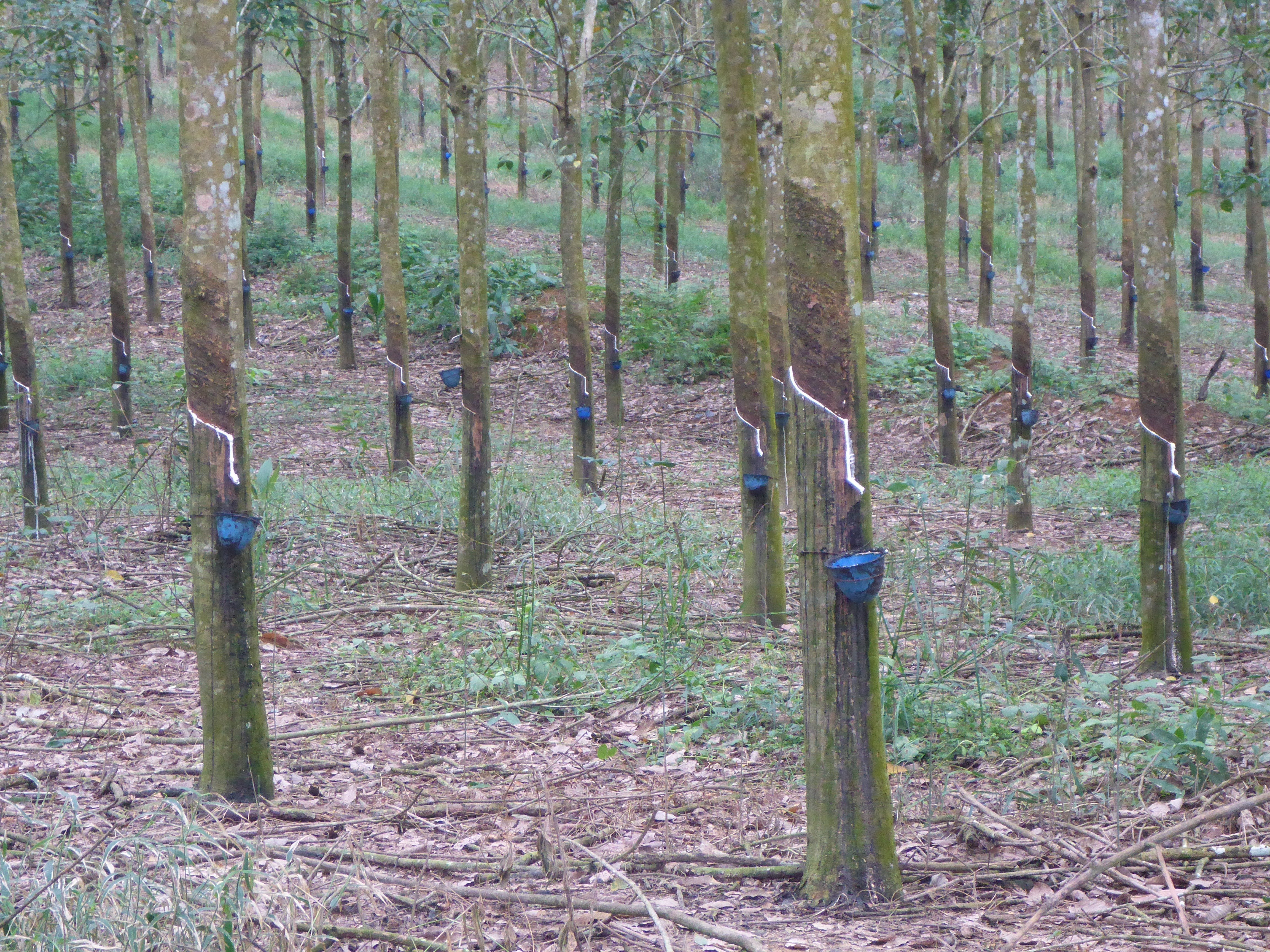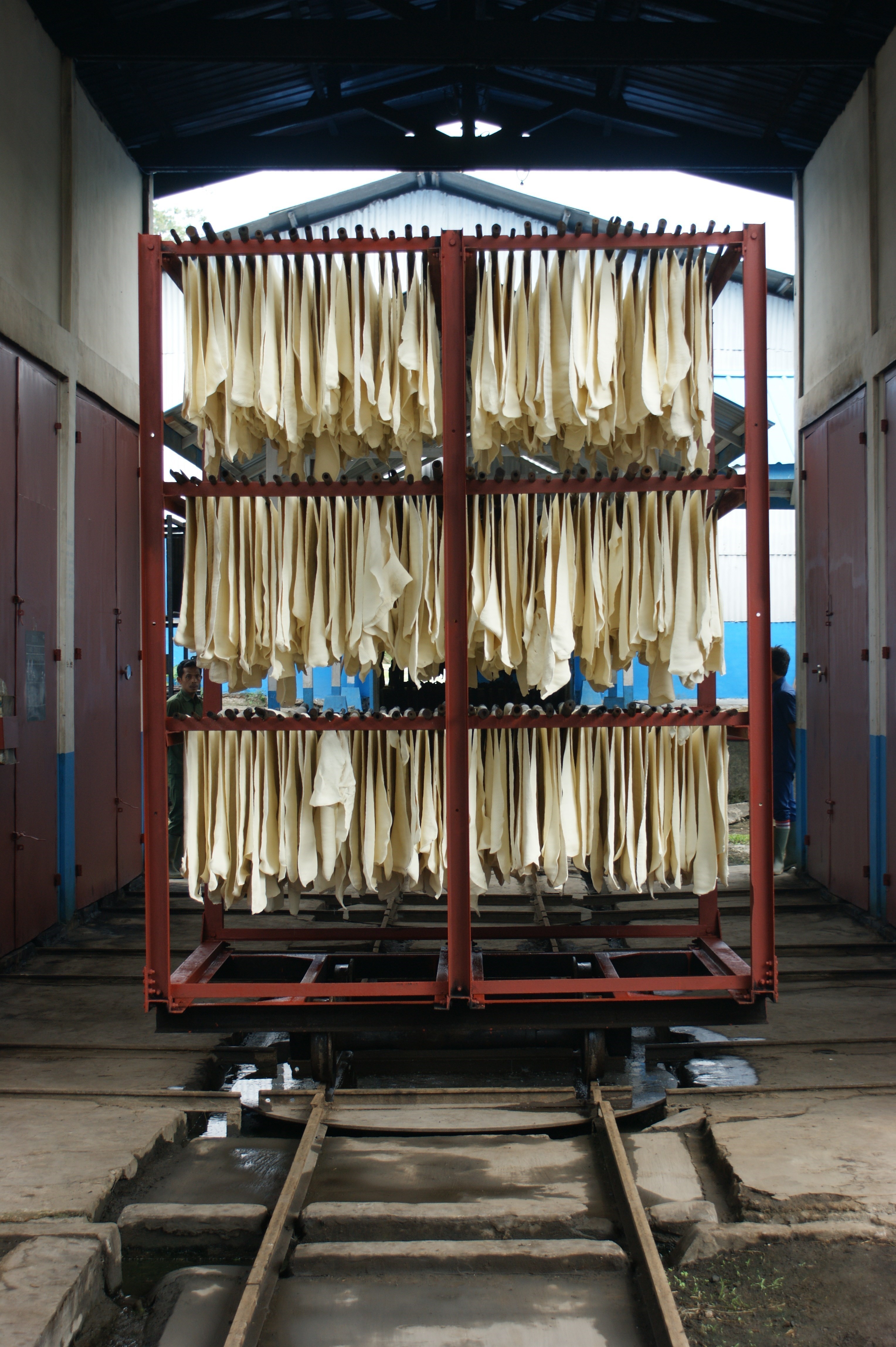SIPEF is producing and selling palm products, such as crude palm oil, palm kernels and crude palm kernel oil, as well as natural rubber, tea in bulk, green bananas, flowers and foliage. All products are 100% traceable to the source.
In June 2020, it was decided to convert two of the three rubber plantations, also suitable for palm cultivation, into oil palm plantations and immediately start the conversion process. By the end of 2024, all rubber plantations will have been prepared for conversion to palm which means that the Group will not produce any rubber anymore as of 2025.
As the management of MASE Palembang was handed over to Shamrock Group on 1 May 2021, the figures of these activities are from that date no longer integrated in the consolidation.
Rubber


The source of natural rubber latex is the rubber tree (Hevea brasiliensis). The rubber tree requires special growing conditions such as evenly distributed rainfall; temperatures ranging between 20 to 34°C; sunshine and absence of strong winds. For these reasons, rubber trees grow only in areas 15 to 20° latitude north or south of the Equator. The economic life period of the rubber tree is around 25 years, after an immature phase of about 5 years.
The rubber latex comes from the bark of the tree. Tapping involves cutting the bark of the tree in a spiral covering half of the circumference and inserting a metal spout into the lowest point of the cut as well as fixing a cap underneath it. Tapping normally takes place every other day early in the morning when the internal pressure of the tree is highest. Tapping of rubber trees is considerably curtailed annually during the so-called wintering period when a degree of leaf drop takes place. This usually takes about 2 months.
After tapping, the latex is taken to a processing plant to be sieved, blended and coagulated. Then it is either rolled into sheets and dried in smokehouses to produce Ribbed Smoked Sheets (RSS) or it will be washed, shredded and granulated before being dried in deep-bed driers to form a block rubber known as Technically Specified Rubber (TSR). Afterwards, the rubber is pressed into bales and wrapped into polythene bags for dispatch. A small proportion is also processed and sold as latex concentrate.
While natural rubber competes with synthetic rubber, the inability of synthesisers to produce the same degree of elasticity has precluded the exclusive use of synthetic materials in many fields notably the tyre industry and the heavy duty tyres, which account for about 70% of the total rubber consumption. Other significant uses of rubber are door and window profiles; hoses, belts, matting, flooring and dampeners (anti-vibration mounts) for the automotive industry; gloves (medical, household and industrial) and as adhesives in many manufacturing industries and products.